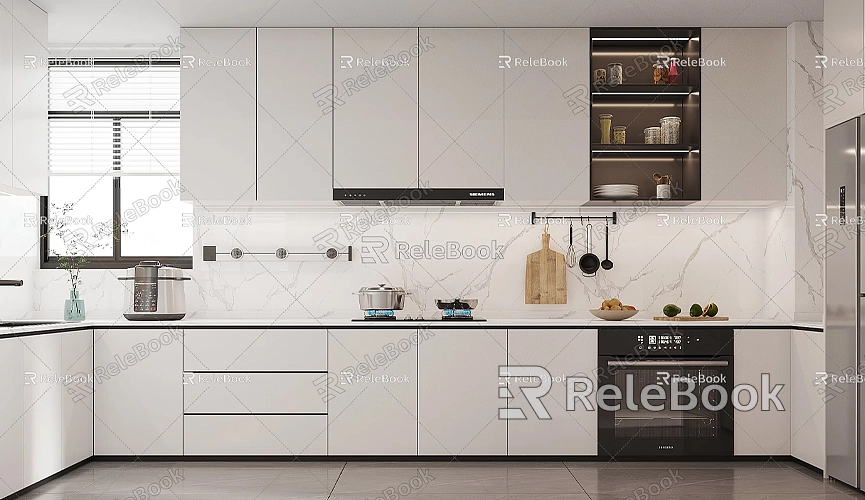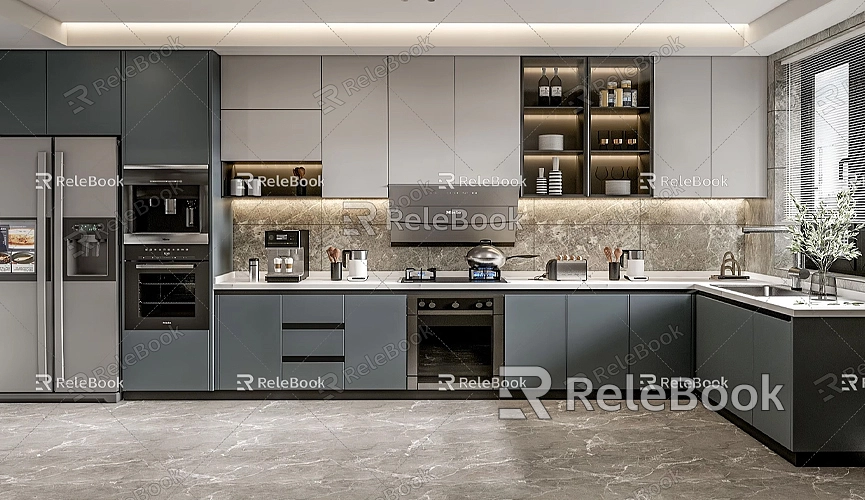How to Import DAE Models into SketchUp with UV Map Materials
In modern 3D modeling and rendering workflows, the DAE (Collada) file format has become a widely used open exchange format for data transfer between various 3D software and platforms. Whether in game development, animation production, or architectural design, DAE files are crucial. They not only store geometric data for models but also retain UV map information, ensuring that 3D models display textures and materials correctly.
However, importing DAE files into SketchUp while preserving UV map materials is one of the challenges designers face when working across different platforms. While SketchUp is a very user-friendly modeling tool, its handling of external 3D formats can sometimes result in missing textures, misaligned geometry, or other issues. Understanding how to correctly import DAE models and ensure UV maps are accurately preserved can significantly boost efficiency and ensure that models and materials match perfectly.

This guide will walk you through the process of importing DAE files into SketchUp and retaining UV map materials, helping you overcome common import problems and improving your overall 3D modeling efficiency and quality.
What is a DAE File?
DAE (Digital Asset Exchange) is an open-standard 3D model file format developed by the Khronos Group to promote content exchange between different 3D applications. DAE files support a wide range of 3D data, including model geometry, materials, textures, lighting, and animations. As an open standard, the DAE format is widely supported by many 3D modeling software programs, game engines, and other visual applications.
Particularly in multi-software environments, DAE files serve as a bridge between different software platforms, allowing data to be seamlessly transferred between programs. For example, you can create and edit 3D models in software like Blender, Maya, or 3ds Max, and then export them in DAE format for import into other platforms or rendering tools.
Why Choose the DAE File Format?
The DAE file format is popular in 3D modeling mainly because it stores rich 3D data, especially UV maps and materials. A UV map is a method of wrapping 2D textures onto a 3D model's surface, which is essential for accurate 3D model rendering. Proper UV mapping ensures that textures are correctly applied to the model’s surface.
For designers who need to handle complex 3D models and materials in SketchUp, importing DAE files is a convenient option. By importing DAE files, designers can easily bring complex models created in other software into SketchUp, preserving detailed UV maps and material data. This not only saves time compared to modeling from scratch but also ensures consistency and accuracy in the design.

Preparation: Optimizing the DAE File for Textures and Materials
Before importing a DAE file into SketchUp, ensure that the UV maps and materials in the file are correctly set up and free from redundant or erroneous data. To maximize the retention of textures and materials during the import process, consider the following preparatory steps:
Ensure Correct UV Mapping
UV mapping is the key to accurately applying 2D textures to the 3D model’s surface. Before exporting a DAE file, ensure that the model’s UV mapping is correct. Many 3D modeling applications, such as Blender, 3ds Max, and Maya, offer UV editing tools that allow you to check and correct UV maps. Improperly unwrapped or overlapping UVs can cause textures to appear incorrectly or misaligned when imported into SketchUp.
- UV Editing in Blender: In Blender, you can check and edit UV maps in the "UV Editing" workspace. Make sure every face is correctly unwrapped and that there are no overlapping UV areas.
- UV Editor in Maya: Maya offers robust UV editing tools for easily unwrapping and adjusting UVs.
- UVW Unwrap in 3ds Max: In 3ds Max, you can use the UVW Unwrap tool to view and adjust the model’s UV layout to ensure proper texture application.
Ensure Textures Are Properly Linked
In addition to UV mapping, you must ensure that all texture files are correctly referenced in the DAE file. If your 3D model uses external texture files (such as JPG, PNG, etc.), make sure these files are embedded in the DAE file or are located in the same directory as the DAE file. If the textures are not properly embedded, SketchUp may fail to load them after import, leading to missing textures or incorrect material displays.
When exporting the DAE file, always select the option to "embed textures" to ensure that texture information is included with the file. This will prevent missing textures in SketchUp and ensure the model displays correctly.
Optimize the Model and Simplify Complex Geometry
Before importing the DAE file into SketchUp, it’s advisable to optimize the model, especially if it contains complex geometry. Complex models may have a lot of unnecessary detail or redundant geometry that could slow down the import process or cause errors in SketchUp. By merging similar objects, deleting invisible geometry, and simplifying complex models, you can improve import efficiency and avoid potential issues.
Importing the DAE File into SketchUp
SketchUp Pro supports the direct import of DAE-format 3D models. The import process is relatively simple, but there are a few settings to consider to ensure UV map materials are properly retained.
Importing the DAE File
First, open SketchUp and either choose an existing project or create a new one. In SketchUp, click the "File" menu at the top and select "Import." In the file dialog that appears, locate and select your prepared DAE file. Make sure that you select the COLLADA (.dae) file type during the import process.
Setting Import Options
When importing a DAE file, SketchUp will offer several import options. Pay attention to the following key settings:
- Units Settings: Ensure the file's units match the original file to avoid scaling issues when the model is imported.
- Retain UV Maps: Make sure the option to preserve UV maps is selected. SketchUp will attempt to retain the texture coordinates (UV mapping) to ensure that materials and textures are applied correctly.
- Import as Groups or Components: To make the model easier to work with, it’s recommended to import the model as groups or components. This will allow you to adjust and edit the model more easily later.
Checking and Adjusting Textures
After importing, check the textures and materials on the model’s surfaces. In most cases, if the DAE file was properly exported with all necessary texture data, SketchUp should automatically apply the textures to the model. However, if any textures are not showing correctly, you may need to manually adjust materials or reapply the textures.
You can use SketchUp’s material panel to adjust the position, scale, and orientation of textures. By adjusting the material's position, you can ensure that textures fit correctly on the model's UV map.
Troubleshooting Common Import Issues
During the import process, you may encounter some common issues:
- Missing or Incorrect Textures: If textures are missing, you can resolve the issue by re-linking the texture files or manually applying materials. Ensure that texture files are located in the same directory as the DAE file or manually specify the texture path in SketchUp.
- Incorrect UV Mapping: Sometimes, textures may appear misaligned or stretched. This typically occurs if the UV map was not correctly exported. You can fix this by adjusting the UV mapping in the original 3D software and re-exporting the DAE file.
- Scaling Issues: If the imported model is not correctly scaled, you can use SketchUp’s scaling tools to adjust the model's size and ensure it matches the rest of your project.
Optimizing Your Workflow
To improve overall efficiency and the model’s operability, here are some optimization tips:
- Organize with Groups and Layers: After importing, use SketchUp’s grouping and layering features to organize different parts of the model. This will help reduce complexity when working with large models and improve rendering performance.
- Clean Up Unnecessary Geometry: The imported model may contain unnecessary geometry, such as empty faces or duplicate vertices. You can optimize the model by using SketchUp’s cleanup tools or plugins to remove excess data.
- Use High-Quality Textures: To improve rendering quality, use high-quality textures. You can download textures from websites like Relebook to enhance the visual quality of your model.
Conclusion
Importing DAE models into SketchUp with UV map materials is a valuable skill, particularly for designers working with complex 3D models and materials. By following the steps outlined above and paying attention to the import options, you can seamlessly transfer your DAE files into SketchUp while preserving textures and materials. This process will not only save time but also ensure consistency and accuracy in your 3D modeling workflow.

